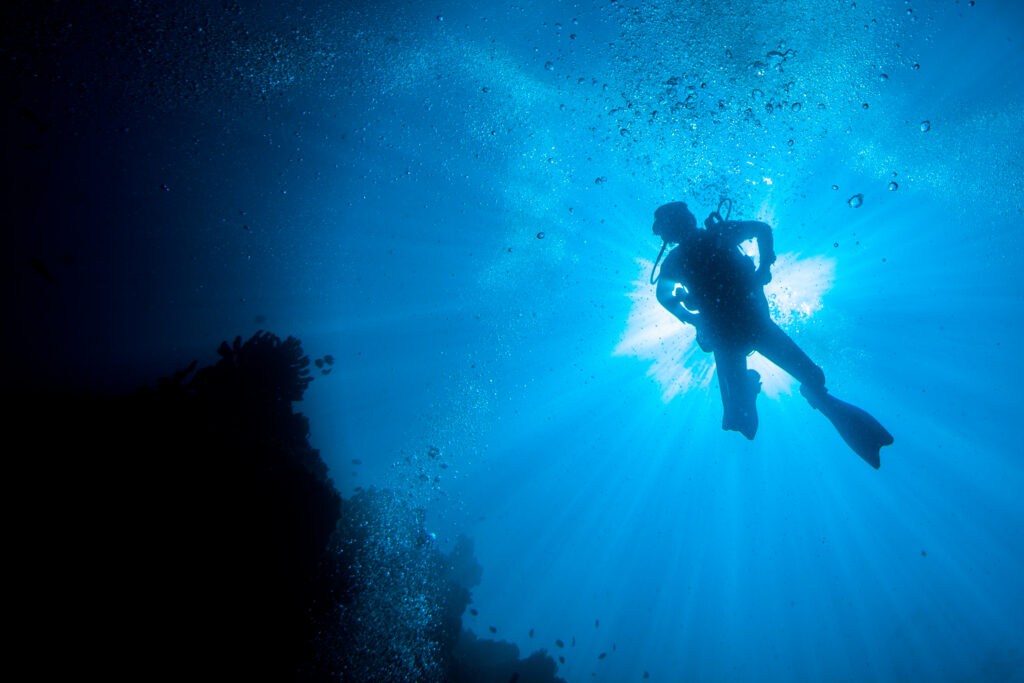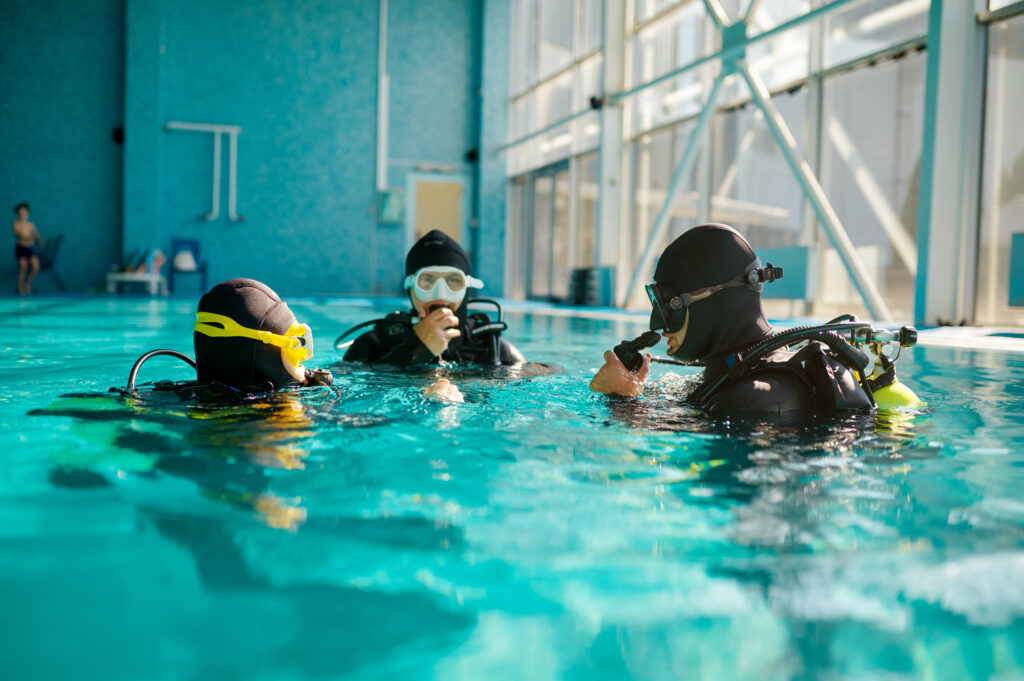What is Mixed Gas?

Mixed gas, in the context of scuba diving, refers to breathing gases other than air, which are used to extend bottom time, reduce decompression obligations, and manage the risks associated with deep diving. These mixtures can include combinations of oxygen, nitrogen, helium, and other inert gases, tailored to specific diving conditions and depths. By using mixed gases, divers can safely reach greater depths and explore environments that would otherwise be inaccessible due to the limitations of breathing air alone.
What is Hyperventilation?

Hyperventilation refers to a state of rapid or deep breathing that exceeds the body’s need for oxygen. This condition leads to a significant decrease in carbon dioxide levels in the blood, causing various physiological effects. Understanding hyperventilation is crucial for scuba divers as it can profoundly impact their safety and overall experience underwater. Divers need to be aware of the causes, effects, and preventive measures related to hyperventilation to ensure safe and enjoyable diving experiences.
What is a Lifeline?

A lifeline in scuba diving is a critical safety device designed to ensure the diver’s connection to a secure point, whether it be a boat, surface support, or another diver. This tether provides a physical or electronic means of communication and safety, offering reassurance and vital linkage in underwater environments. Given the potential dangers inherent in scuba diving, such as strong currents, poor visibility, and equipment failure, lifelines serve as essential tools for maintaining diver safety and facilitating effective rescue operations if needed.
What is Night Diving?

Night diving is a thrilling and unique scuba diving experience that occurs after the sun has set, opening up a world of underwater wonders unseen during the day. It offers divers an opportunity to witness the nocturnal behaviors of marine life and the vibrant colors that are often lost in the daylight. The contrast between the darkness of the water and the focused beam of a dive light creates an atmosphere of mystery and excitement, making night diving an appealing adventure for those looking to experience something beyond the typical daylight dives.
What is Laryngospasm?

Laryngospasm is a sudden, involuntary contraction of the vocal cords that can temporarily block airflow to the lungs. In the context of scuba diving, this condition is particularly hazardous because it can occur unexpectedly and lead to life-threatening situations underwater. Understanding laryngospasm is crucial for divers, as it directly impacts their safety and ability to respond effectively to underwater emergencies.
What is Narcosis?

Narcosis, often referred to as “the rapture of the deep,” is a condition that affects scuba divers when they descend to certain depths underwater. It is a state of altered consciousness caused by the pressure of breathing gases at depth. Understanding narcosis is crucial for divers to ensure their safety and well-being while underwater. This condition can impact a diver’s mental and physical capabilities, leading to potentially dangerous situations if not recognized and managed properly. As such, it is a topic of significant importance in the field of scuba diving, both for recreational and professional divers.
What is a Dive Table?

A dive table is a crucial tool in the practice of scuba diving, used to ensure divers can ascend safely without suffering from decompression sickness. These tables provide guidelines for how long a diver can stay underwater at various depths and the necessary surface intervals to avoid decompression sickness, also known as “the bends.” Dive tables are essential for maintaining diver safety, as they help manage the body’s intake and release of inert gases, such as nitrogen, which dissolve into the body tissues under pressure. By following dive table guidelines, divers can plan their dives to stay within safe limits, reducing the risk of injury from decompression.
What is Open Circuit Scuba?

Open circuit scuba diving is a method of underwater diving in which the diver breathes from a tank of compressed gas and exhales directly into the water. This system is contrasted with closed-circuit systems, where exhaled gas is recycled and re-breathed. Open circuit scuba is the most common and widely used system in both recreational and professional diving. It is valued for its simplicity, reliability, and the extensive training programs available to certify divers. The ease of use and availability of open circuit scuba equipment have made it a cornerstone of underwater exploration.
What is Nitrogen Narcosis?

Nitrogen narcosis, often referred to as “raptures of the deep,” is a condition that affects scuba divers at significant depths. This phenomenon is induced by the increased partial pressure of nitrogen in the body as divers descend, leading to a narcotic effect on the central nervous system. Recognized by divers and scientists alike, nitrogen narcosis can impair judgment, motor coordination, and overall cognitive function, making it a critical issue in deep-sea diving.
What is Multilevel Diving?

Multilevel diving is a technique in scuba diving that involves changing depths multiple times throughout a single dive. Unlike traditional dives, where a diver descends to a certain depth and remains there until starting their ascent, multilevel diving takes advantage of varying depths to maximize bottom time and minimize the risk of decompression sickness (DCS). This method is particularly beneficial for exploring underwater environments with significant depth variations, such as coral reefs, wrecks, and underwater walls.
